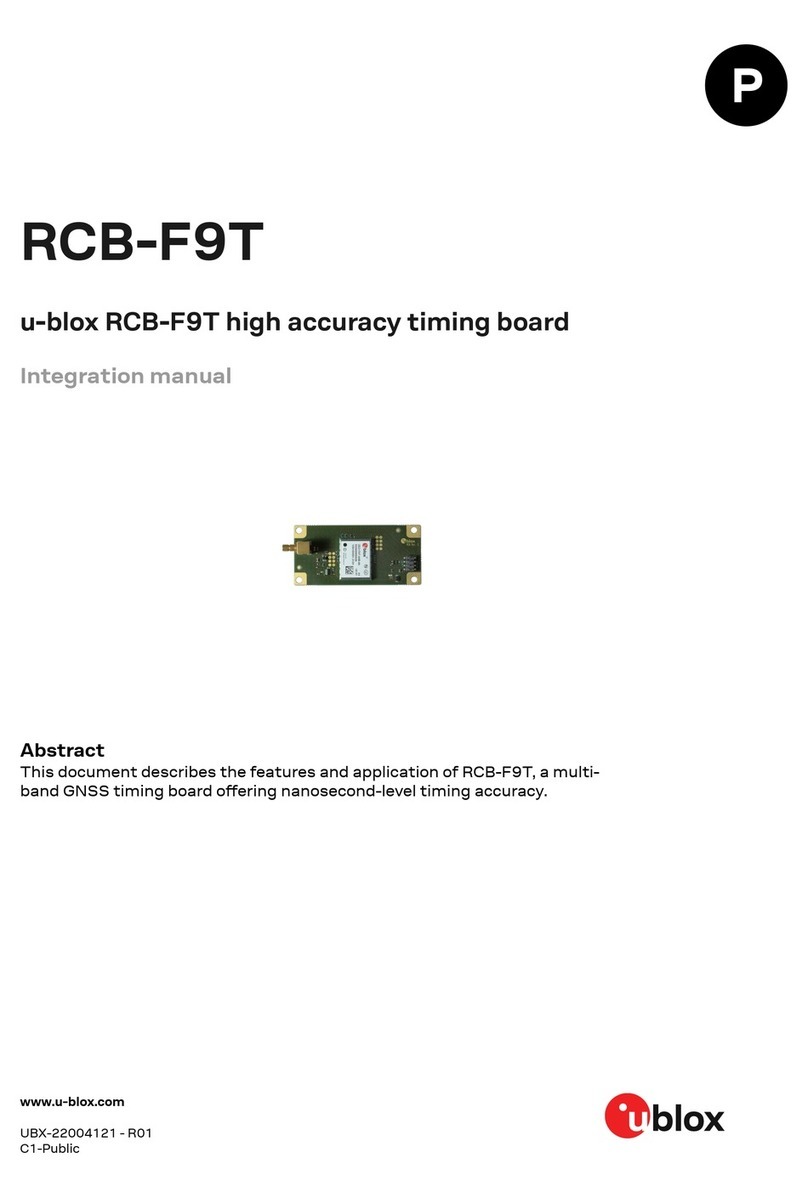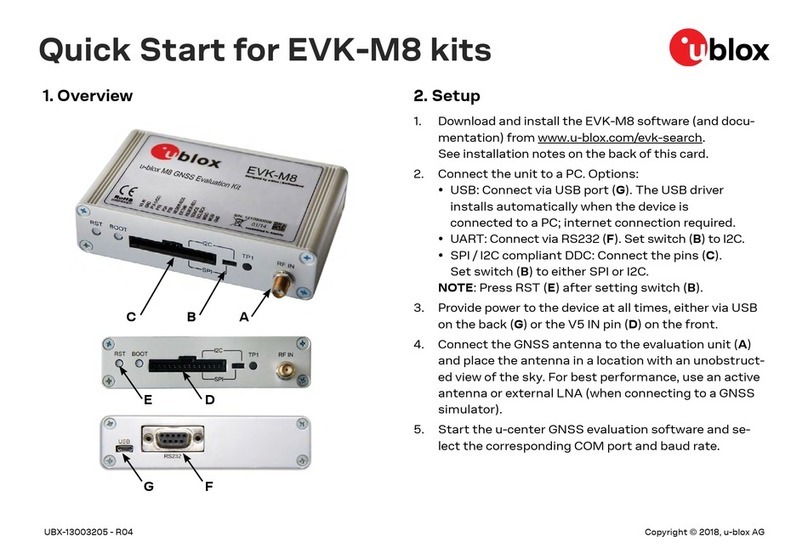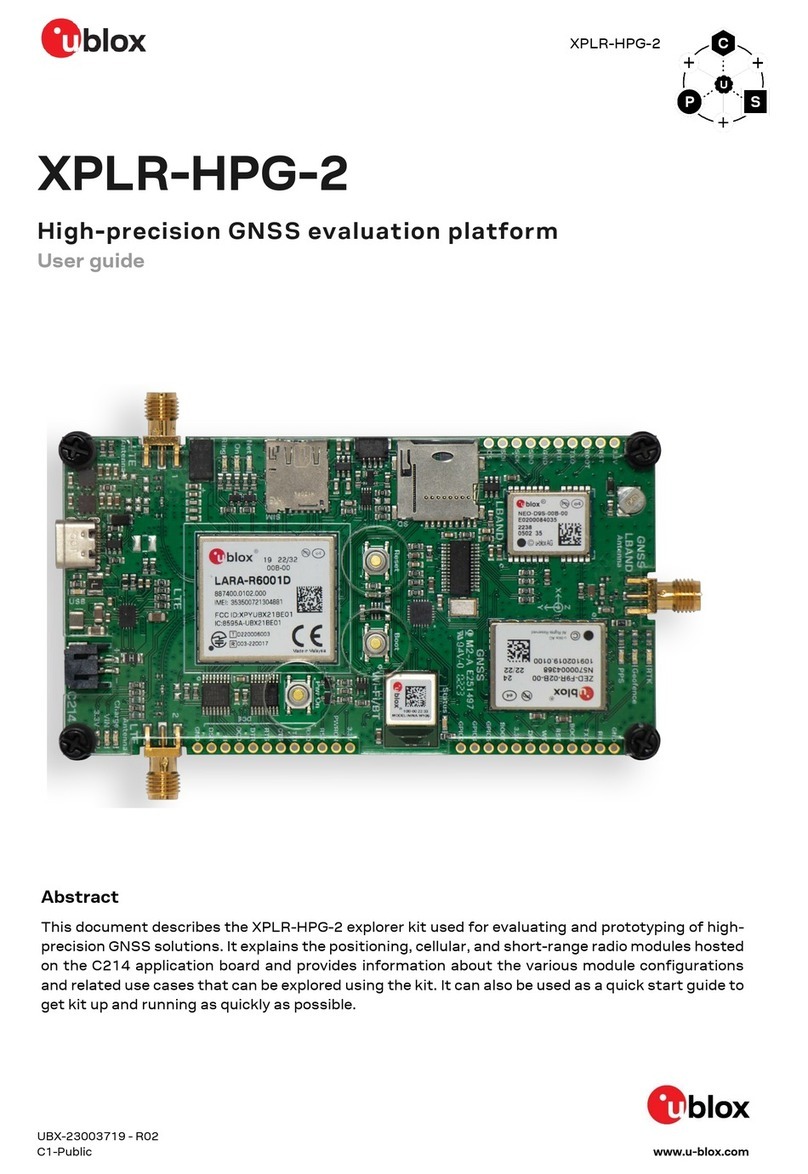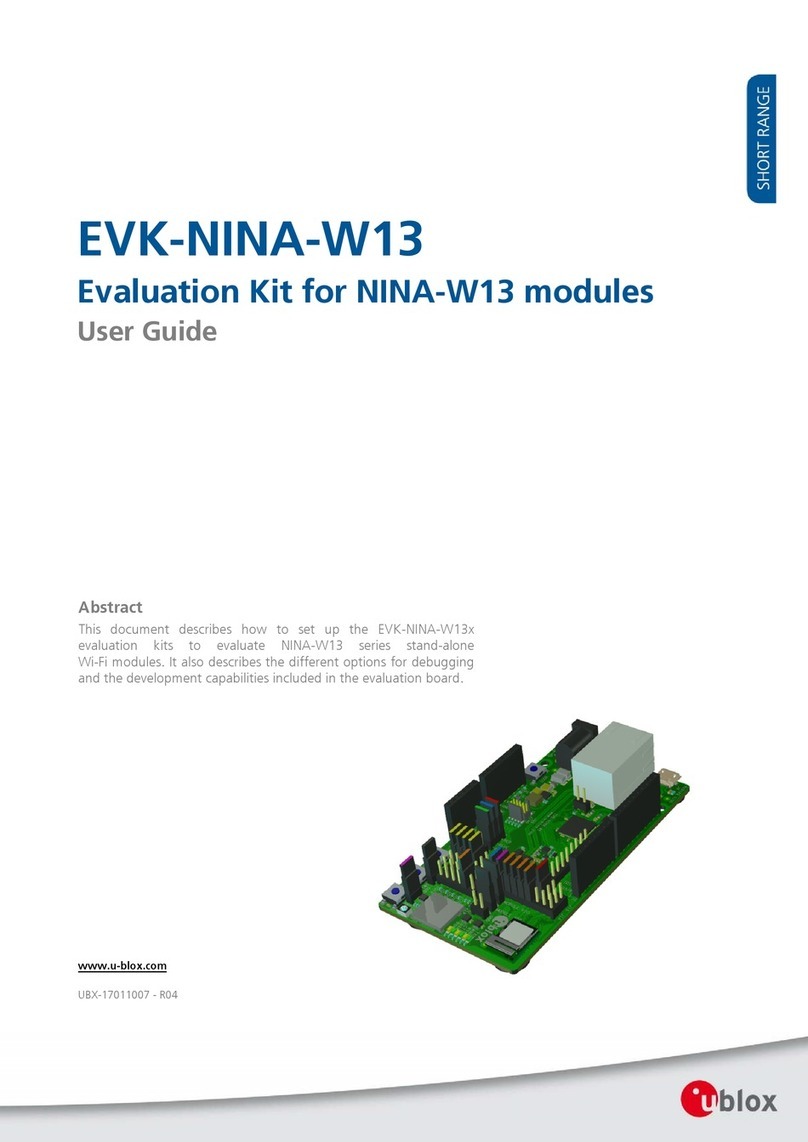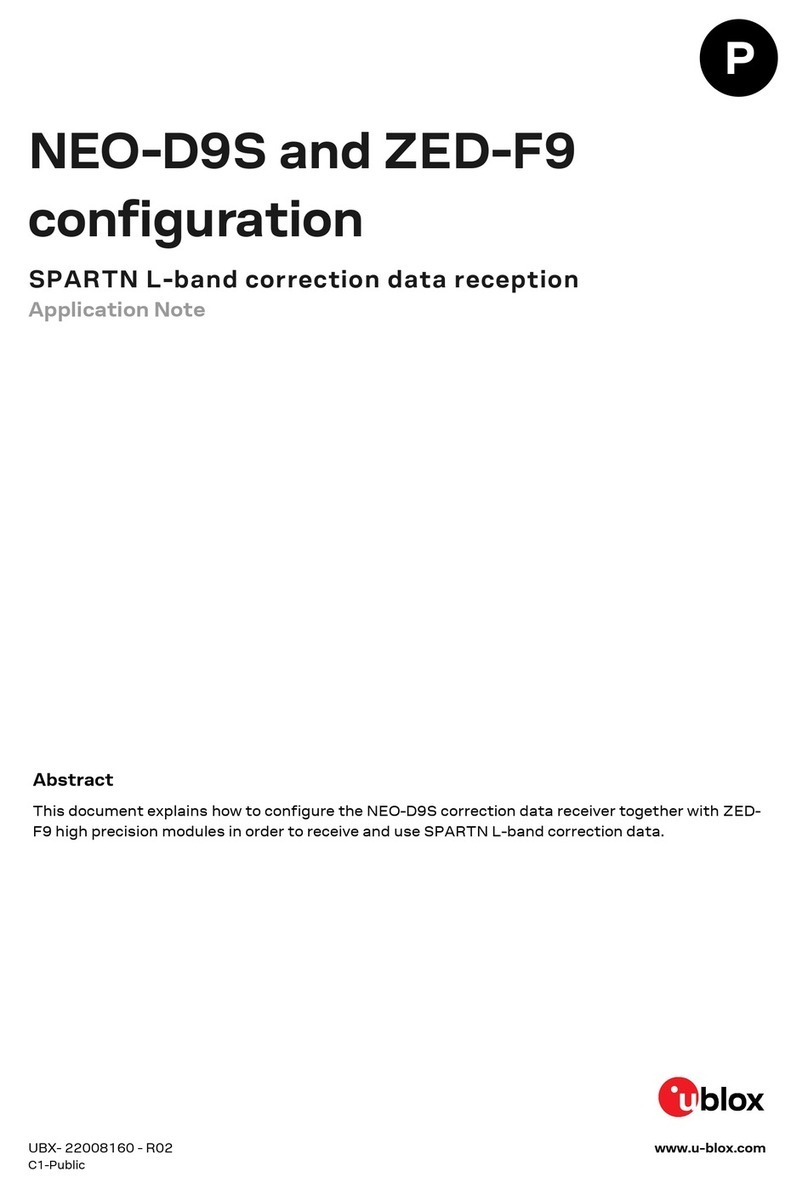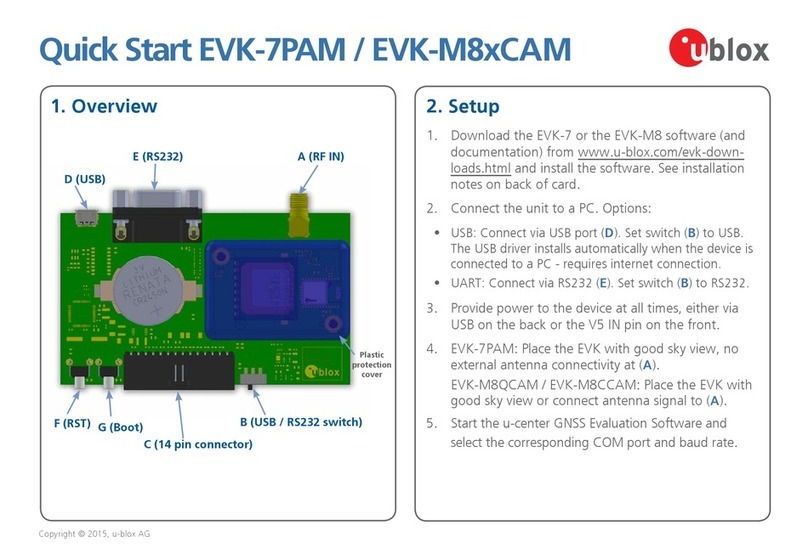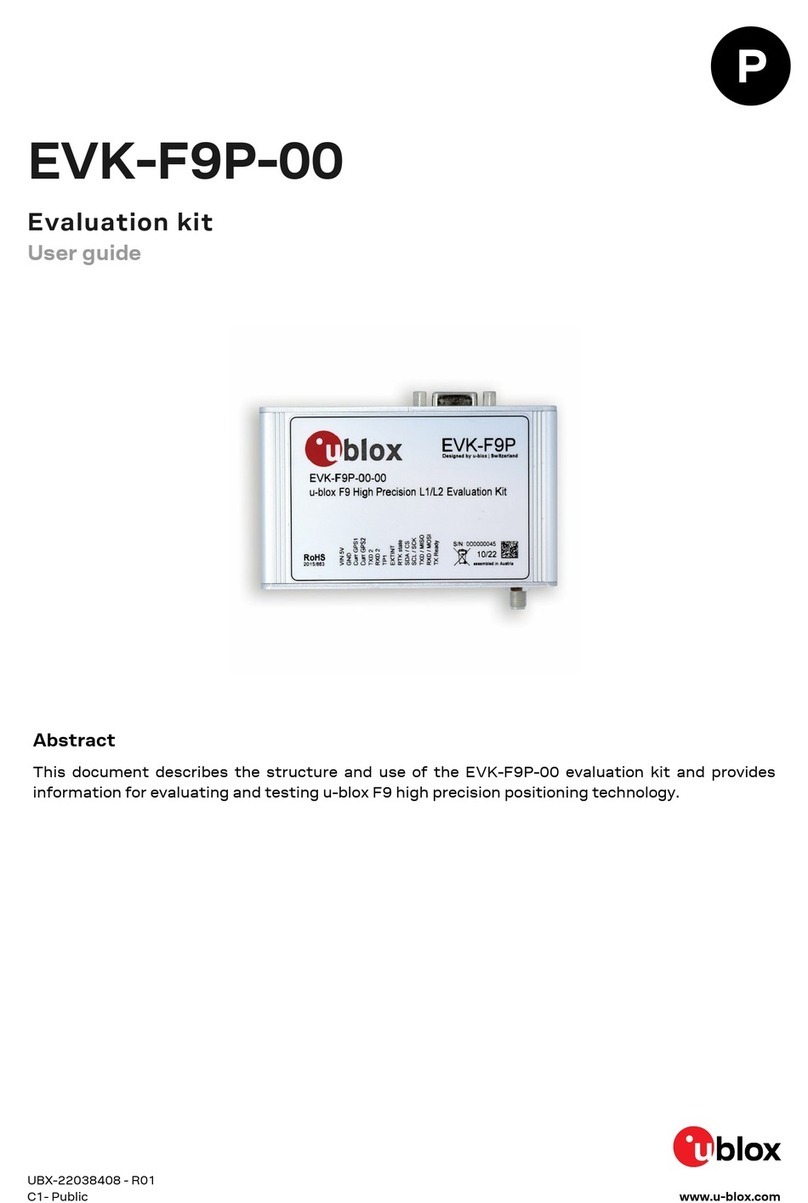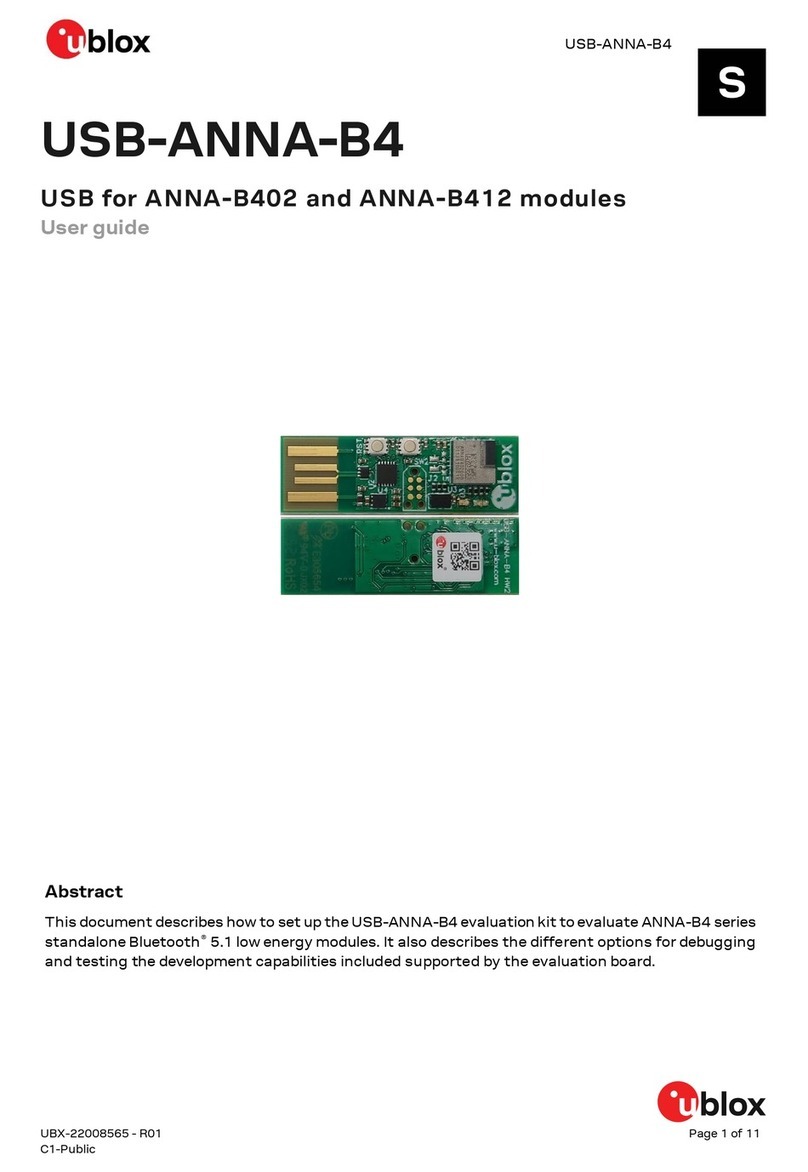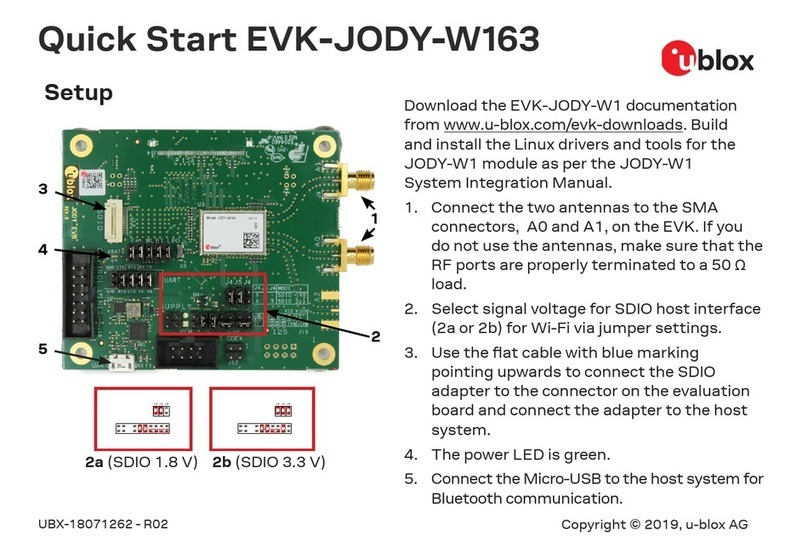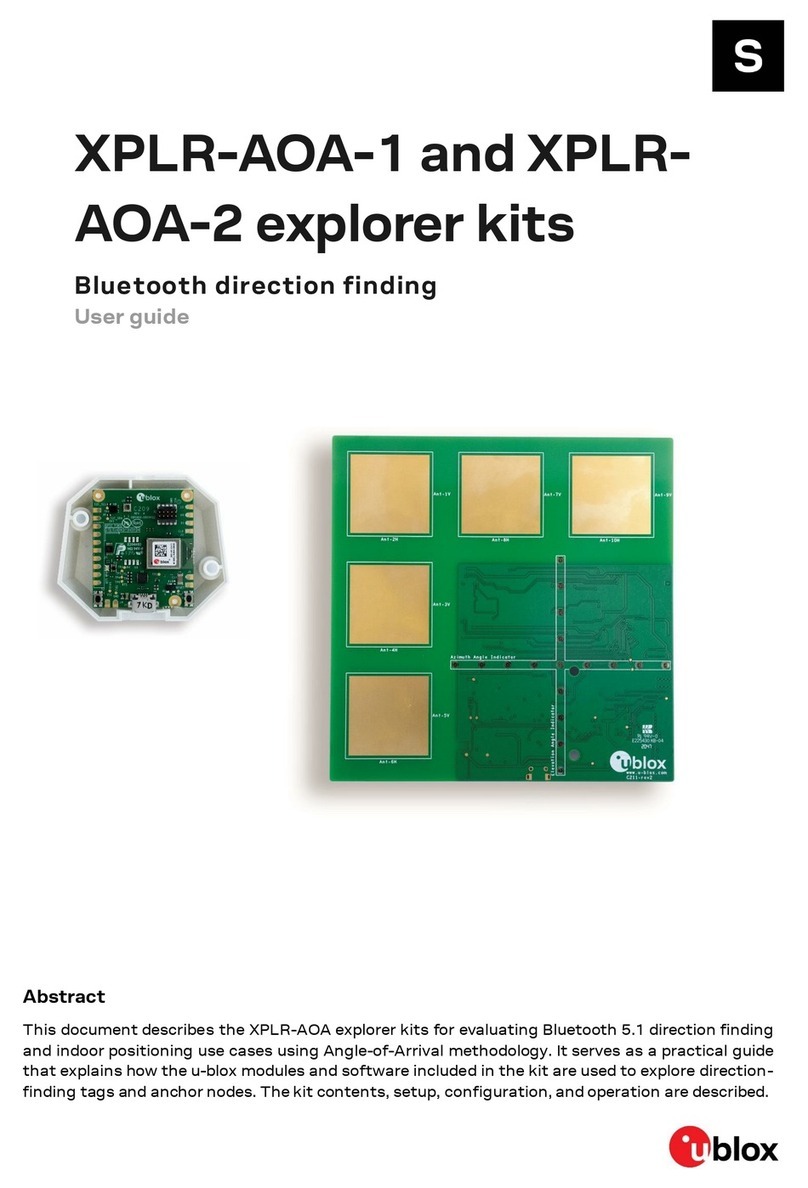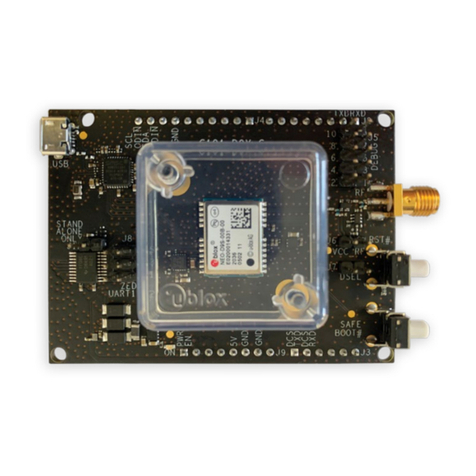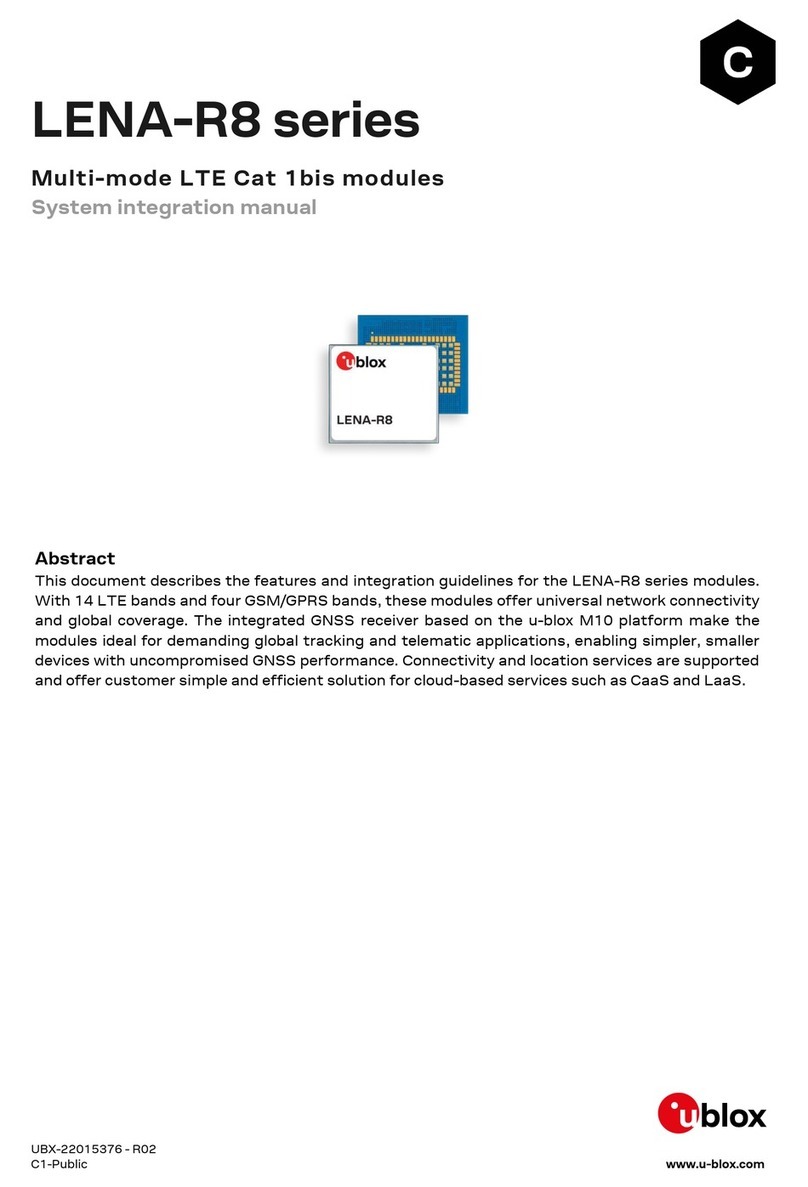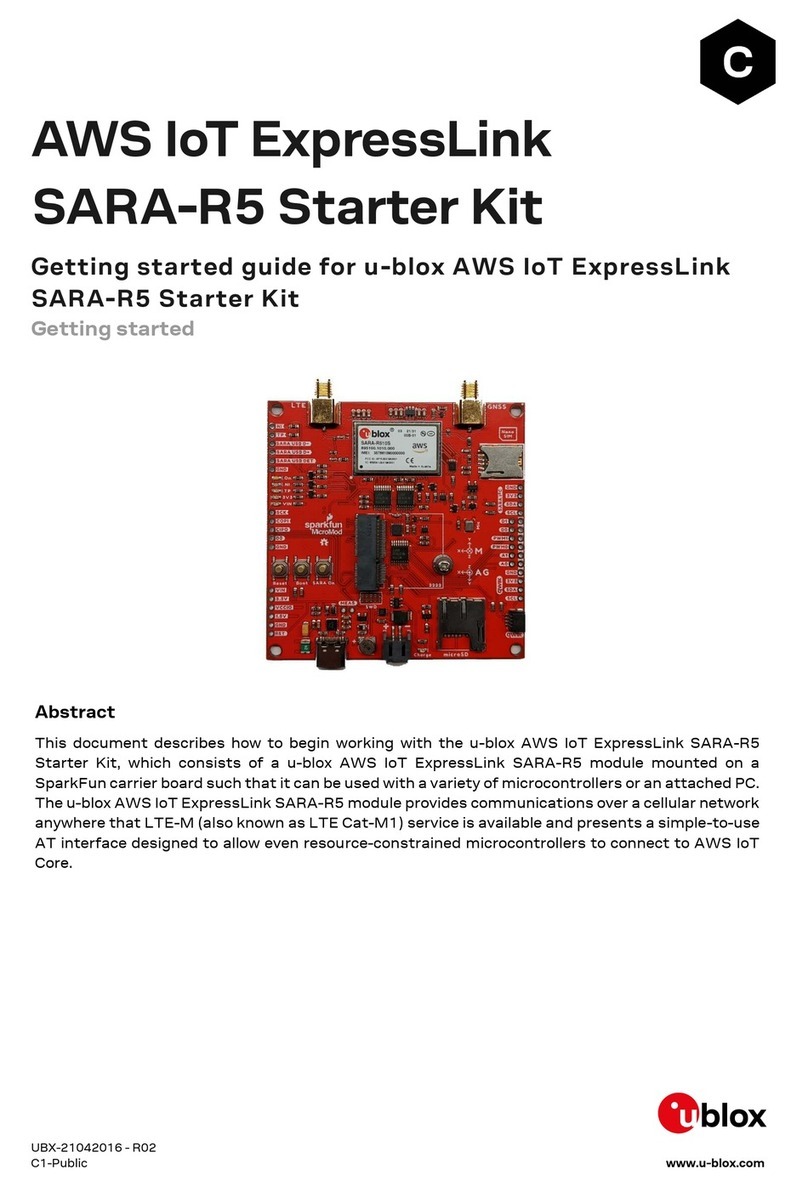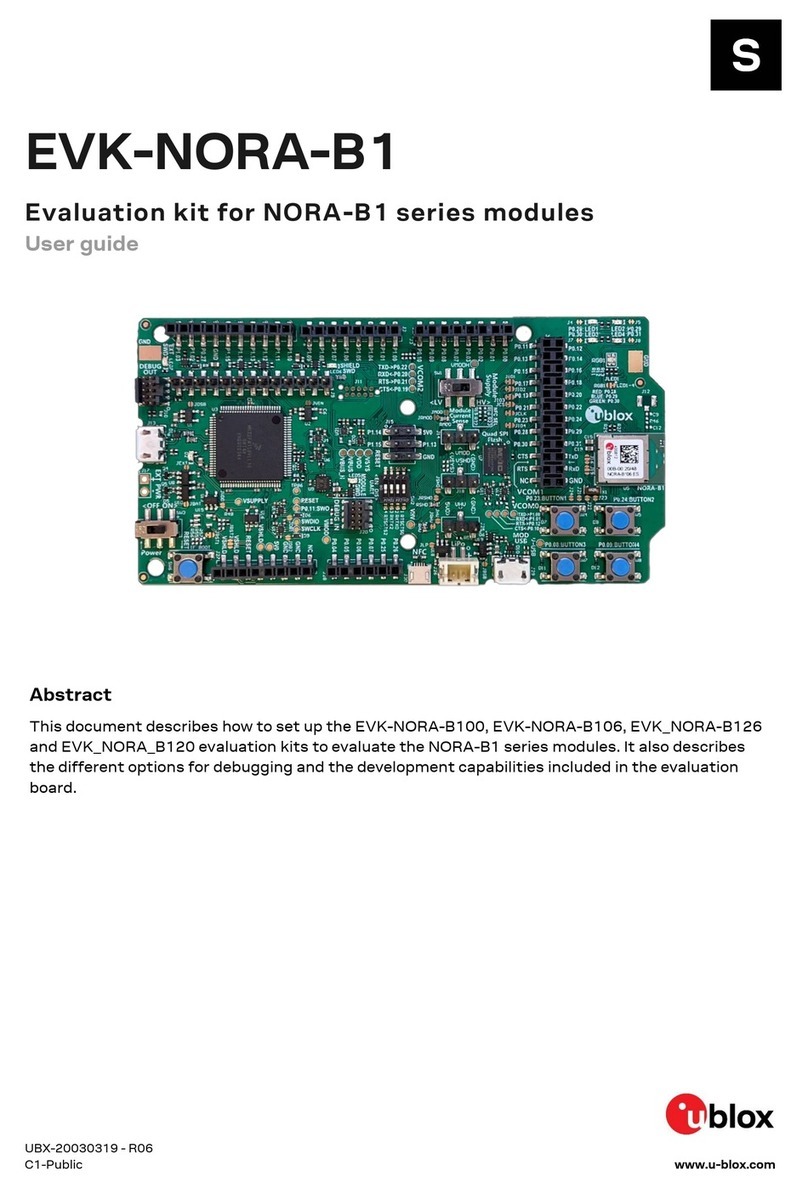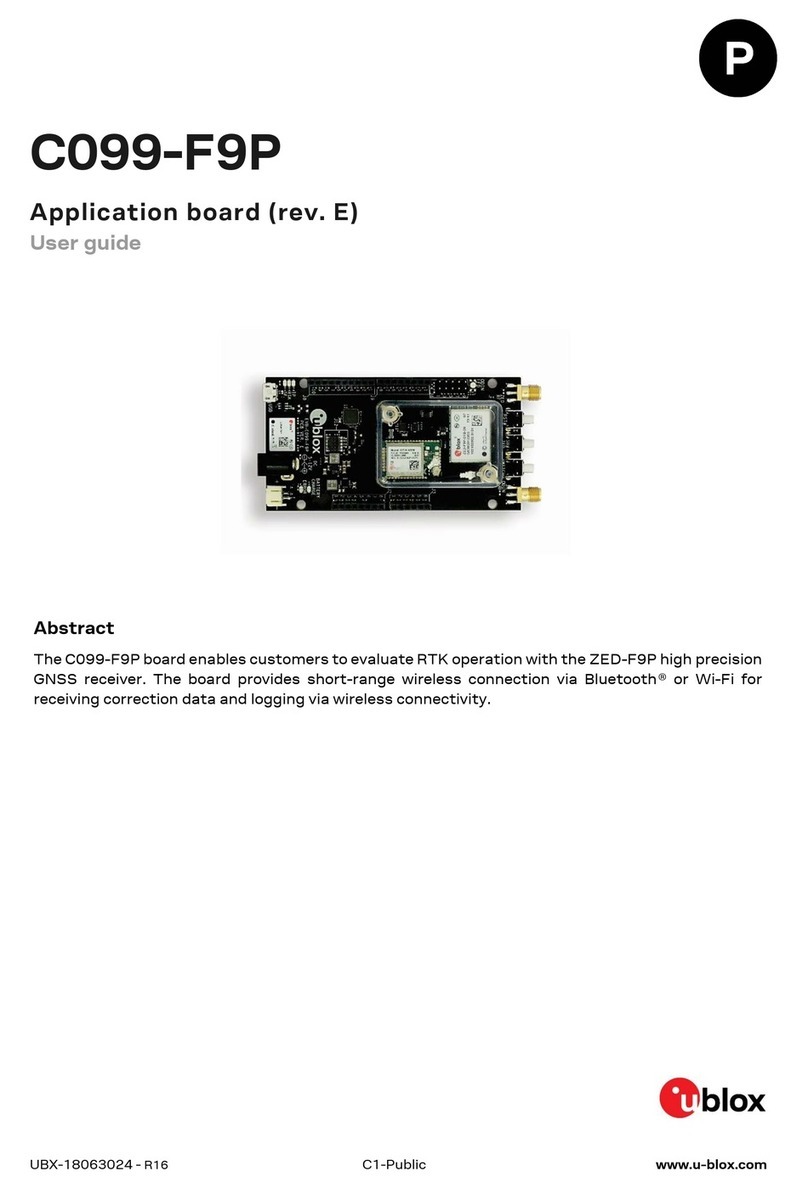JODY-W1 series - System integration manual
UBX-16012621 - R18 Contents Page 4 of 72
C1-Public
2.4.3 High-speed UART interface............................................................................................................31
2.5 General high speed layout guidelines ...................................................................................................31
2.5.1 General considerations for schematic design and PCB floor planning .................................31
2.5.2 Component placement ....................................................................................................................31
2.5.3 Layout and manufacturing.............................................................................................................32
2.5.4 Layout considerations to reduce spurious emissions ..............................................................32
2.6 Module footprint and stencil design .....................................................................................................33
2.7 Thermal guidelines ...................................................................................................................................34
2.8 ESD guidelines ...........................................................................................................................................35
2.9 Design-in checklist....................................................................................................................................36
2.9.1 Schematic checklist.........................................................................................................................36
2.9.2 Layout checklist................................................................................................................................36
3Software ................................................................................................................................................ 37
3.1 Available software packages ..................................................................................................................37
3.1.1 Supported kernel versions ..............................................................................................................37
3.2 Software package content......................................................................................................................38
3.2.1 Wi-Fi firmware images.....................................................................................................................38
3.2.2 Additional u-blox software deliverables .......................................................................................39
3.3 Software architecture overview .............................................................................................................39
3.3.1 Wi-Fi driver.........................................................................................................................................39
3.3.2 Bluetooth host stack........................................................................................................................39
3.4 Compiling the software............................................................................................................................40
3.4.1 Prerequisites......................................................................................................................................40
3.5 Deploying the software............................................................................................................................40
3.5.1 Additional software requirements ................................................................................................41
3.6 Loading the Wi-Fi driver ..........................................................................................................................41
3.7 Bluetooth initialization.............................................................................................................................42
3.8 Usage examples ........................................................................................................................................43
3.8.1 5G SoftAP + 2G SoftAP ...................................................................................................................44
3.8.2 2G SoftAP + 2G Station...................................................................................................................45
3.8.3 Country code selection ....................................................................................................................46
3.8.4 Bluetooth inquiry...............................................................................................................................46
3.9 Bluetooth vendor specific HCI commands...........................................................................................46
3.9.1 SCO/PCM interface configuration ................................................................................................46
3.9.2 PCM/I2S audio interface configuration........................................................................................47
3.9.3 PCM loopback mode.........................................................................................................................48
3.9.4 Set sleep mode parameters ...........................................................................................................49
3.9.5 Enable wide band speech ................................................................................................................51
4Handling and soldering ..................................................................................................................... 52
4.1 Special ESD handling precautions.........................................................................................................52
4.2 Packaging, shipping, storage, and moisture preconditioning .........................................................52
4.3 Reflow soldering process.........................................................................................................................53
